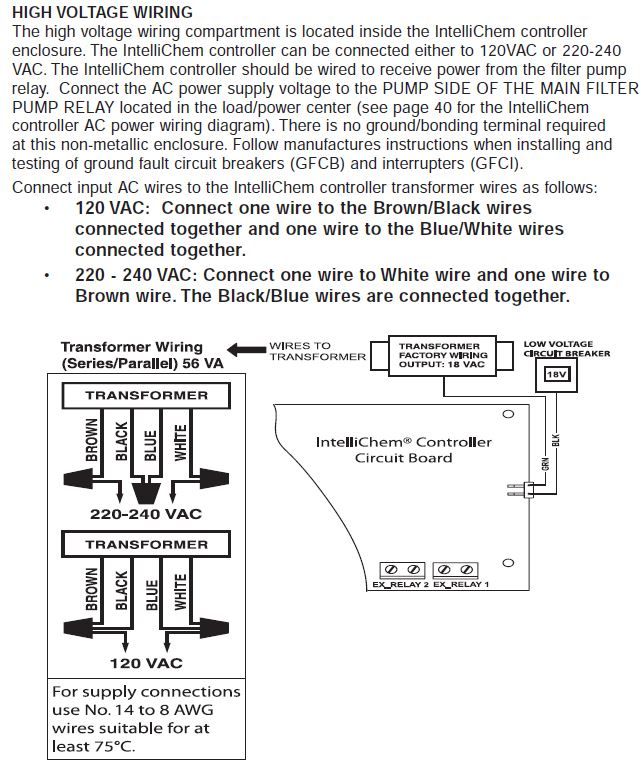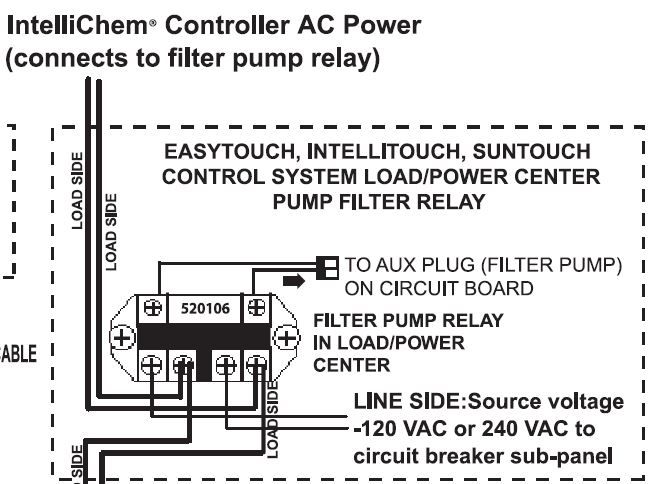Background:
I’ve been running two separate Stenner pumps for chlorine and acid for about two years now. My chlorine “tank” is a 5 gallon bucket, and my acid “tank” is a 10 gallon bucket. I dilute my acid 3:1 (3 parts water to 1 part acid). I know most people do 2:1 or even 1:1, but I just like playing it safe, and I get about 6-8 weeks out of the 10 gallon acid mix.
I really like the setup, and I rarely have to make big adjustments to the chlorine dosage. However, the acid seems to be a mild daily roller coaster. Over time, I’ve found that maintaining a pH of 7.8 – 8.0 works best for my pool as opposed to the normal 7.2 – 7.6. But even in the 7.8 – 8.0 range, one day I’ll get 7.9, another day 8.0, another 8.1, sometimes 8.2. It’s manageable with my setup because I have a WiFi outlet timer controlling the acid pump, so I can just dial in the required amount of time to dose the right amount of acid each day. As “easy” as that is, I guess I’m always looking to make things even easier by not having to take a water sample every single day just to keep my pH in check. Also, when I’m away for more than a couple days, I’d rather not ask the wife or neighbors to take readings (the right way), texting me the number then making sure I set the timer correctly each day. Enter the IntelliChem.
After reading many other posts on TFP about the IntelliChem, I think I’d like to give it a shot at making the pH maintenance easier, which I’ve read it’s pretty good at (unlike the FC/ORP maintenance). I’ll try both, but I’m really just interested in the pH monitoring and dosing aspect, unlike the IntelliPH, which is basically the same thing I have already…honestly not even sure why they call it IntelliPH. “EasyPH” I could see, but there’s nothing intelligent about that system…I digress.
Question:
Alright, so my main question in all of this is where to put the taps for the inlet and outlet to the flow cell of the IntelliChem? Most posts I’ve read come off the pump suction for the flow cell outlet and then somewhere after the filter for the flow cell inlet, which makes sense to help with low pump speeds on VS pumps. With that in mind, I was considering location B (pump suction) for the flow cell outlet and location A (post filter, pre-ozone and acid/chlorine injection) for the flow cell inlet. Would this be acceptable, or should location C (after acid/chlorine injection) be used instead of one of those or is there some other arrangement anyone recommends?
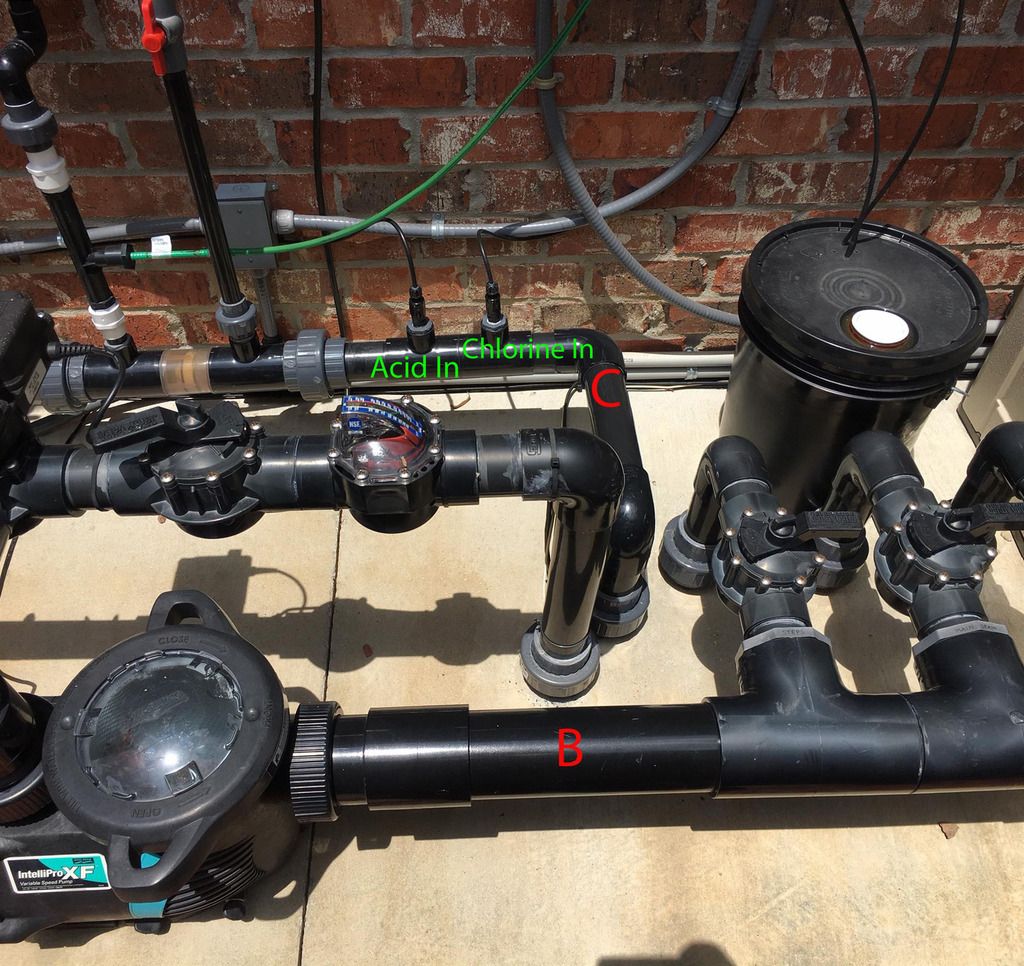
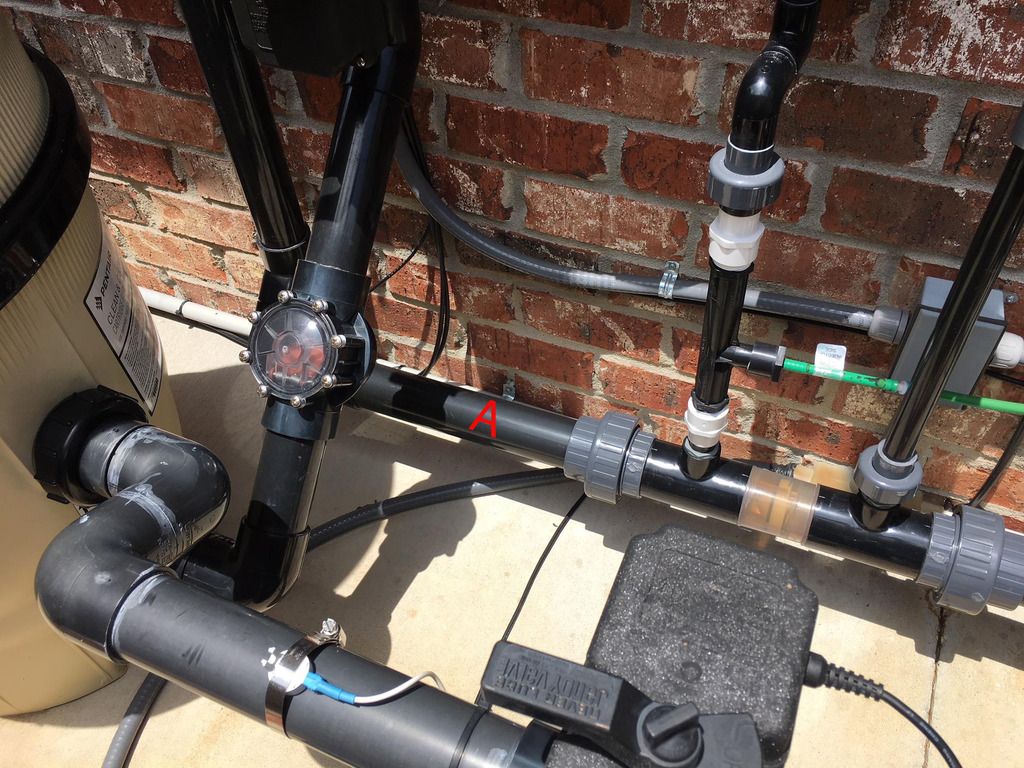
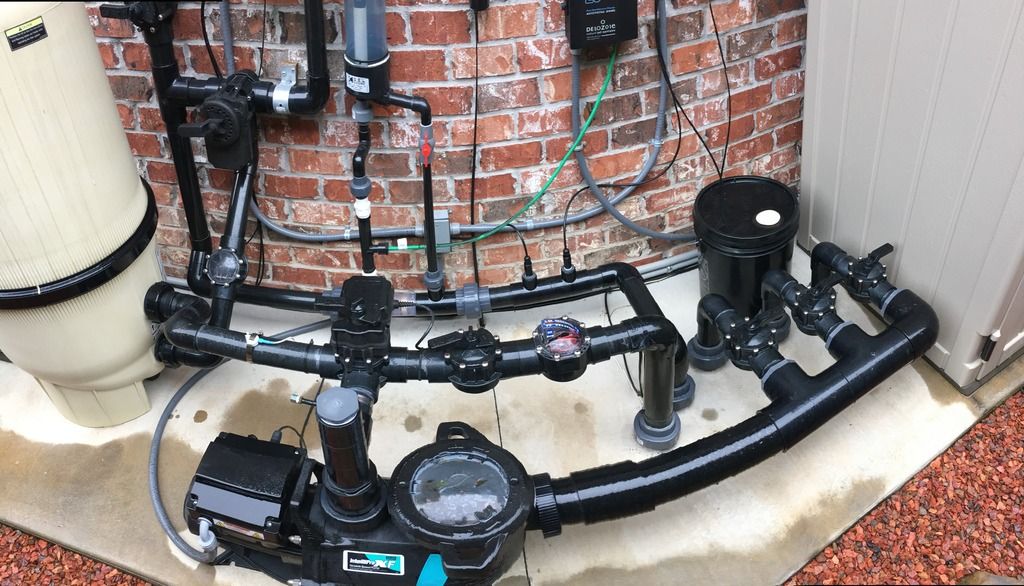
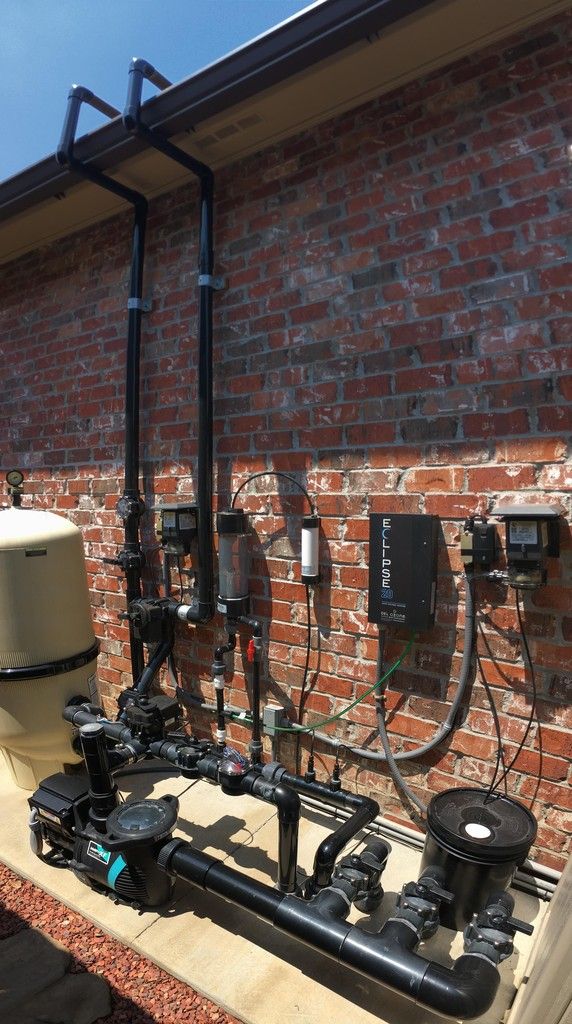
I’ve been running two separate Stenner pumps for chlorine and acid for about two years now. My chlorine “tank” is a 5 gallon bucket, and my acid “tank” is a 10 gallon bucket. I dilute my acid 3:1 (3 parts water to 1 part acid). I know most people do 2:1 or even 1:1, but I just like playing it safe, and I get about 6-8 weeks out of the 10 gallon acid mix.
I really like the setup, and I rarely have to make big adjustments to the chlorine dosage. However, the acid seems to be a mild daily roller coaster. Over time, I’ve found that maintaining a pH of 7.8 – 8.0 works best for my pool as opposed to the normal 7.2 – 7.6. But even in the 7.8 – 8.0 range, one day I’ll get 7.9, another day 8.0, another 8.1, sometimes 8.2. It’s manageable with my setup because I have a WiFi outlet timer controlling the acid pump, so I can just dial in the required amount of time to dose the right amount of acid each day. As “easy” as that is, I guess I’m always looking to make things even easier by not having to take a water sample every single day just to keep my pH in check. Also, when I’m away for more than a couple days, I’d rather not ask the wife or neighbors to take readings (the right way), texting me the number then making sure I set the timer correctly each day. Enter the IntelliChem.
After reading many other posts on TFP about the IntelliChem, I think I’d like to give it a shot at making the pH maintenance easier, which I’ve read it’s pretty good at (unlike the FC/ORP maintenance). I’ll try both, but I’m really just interested in the pH monitoring and dosing aspect, unlike the IntelliPH, which is basically the same thing I have already…honestly not even sure why they call it IntelliPH. “EasyPH” I could see, but there’s nothing intelligent about that system…I digress.
Question:
Alright, so my main question in all of this is where to put the taps for the inlet and outlet to the flow cell of the IntelliChem? Most posts I’ve read come off the pump suction for the flow cell outlet and then somewhere after the filter for the flow cell inlet, which makes sense to help with low pump speeds on VS pumps. With that in mind, I was considering location B (pump suction) for the flow cell outlet and location A (post filter, pre-ozone and acid/chlorine injection) for the flow cell inlet. Would this be acceptable, or should location C (after acid/chlorine injection) be used instead of one of those or is there some other arrangement anyone recommends?




Last edited:



